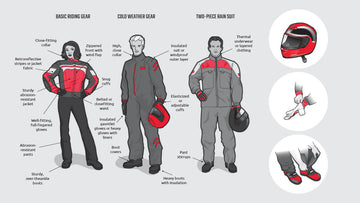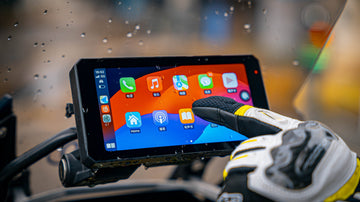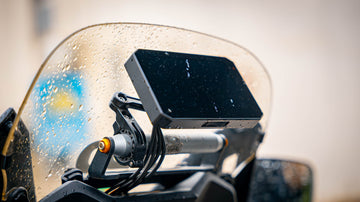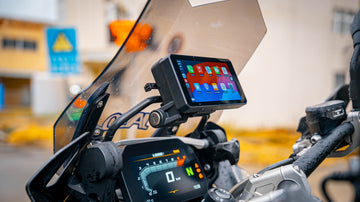Motorcycling offers an unparalleled sense of freedom and exhilaration. However, with great power comes great responsibility, especially when it comes to safety. Whether you're a seasoned rider or just starting, understanding and practicing motorcycle safety is paramount. This comprehensive guide will delve into essential safety gear, crucial riding practices, and how to maintain your motorcycle for a safe and enjoyable journey.
Essential Safety Gear: Your First Line of Defense
Wearing the right gear isn't just about following regulations; it's about protecting yourself. Accidents can happen, and proper gear significantly reduces the risk of serious injury. Think of it as your personal airbag system.
1. Helmets: The Non-Negotiable
A helmet is the single most important piece of safety equipment. It protects your head from impact in the event of a crash. Always choose a helmet that meets safety standards (e.g., DOT, ECE, Snell) and fits snugly. Full-face helmets offer the most protection, covering your entire head and face.
2. Jackets and Pants: Abrasion Resistance
Motorcycle-specific jackets and pants are designed with abrasion-resistant materials like leather or specialized textiles. They often include armor in key areas such as shoulders, elbows, knees, and back. This gear protects your skin from road rash and absorbs impact energy.
3. Gloves: Hand Protection
Your hands are often the first part of your body to hit the ground in a fall. Motorcycle gloves provide protection against abrasion and impact, and also offer a better grip on the handlebars, reducing fatigue.
4. Boots: Ankle and Foot Support
Sturdy, over-the-ankle boots protect your feet and ankles from injury. They should have good grip soles to prevent slipping and offer support to prevent twisting injuries.
Safe Riding Practices: Mastering the Road
Beyond gear, your riding habits play a critical role in your safety. Developing good riding practices can help you anticipate hazards and react effectively.
1. Defensive Riding: Expect the Unexpected
Always assume other drivers don't see you. This mindset encourages defensive riding, where you constantly scan for potential threats, maintain a safe following distance, and have an escape route planned. Be visible by wearing bright colors and using your headlights, even during the day.
2. Lane Positioning: Be Seen, Be Safe
Strategic lane positioning can increase your visibility and provide you with more time and space to react to hazards. Avoid riding in blind spots of other vehicles. In multi-lane roads, consider riding in a position that gives you the best view of traffic and allows others to see you.
3. Cornering Techniques: Smooth and Controlled
Proper cornering techniques are crucial for maintaining control. Look through the turn, use smooth throttle and brake inputs, and lean with the bike. Practice in a safe environment to build confidence and skill.
4. Pre-Ride Inspection: The T-CLOCS Checklist
Before every ride, perform a quick inspection of your motorcycle. The T-CLOCS acronym is a helpful reminder:
•Tires: Check pressure and tread.
•Controls: Ensure levers and pedals are functioning correctly.
•Lights: Verify headlights, taillights, and turn signals work.
•Oil: Check oil levels.
•Chassis: Inspect suspension, chain/belt, and fasteners.
•Stands: Ensure kickstand and center stand are secure.
Motorcycle Maintenance: Keeping Your Ride in Top Condition
Regular maintenance not only extends the life of your motorcycle but also ensures its safe operation. A well-maintained bike is a safer bike.
1. Regular Oil Changes
Engine oil is vital for lubrication and cooling. Follow your manufacturer's recommendations for oil change intervals. Clean oil ensures smooth engine operation and prevents wear.
2. Tire Care
Proper tire pressure is essential for handling and braking. Check your tire pressure regularly and inspect tires for wear, cracks, or punctures. Worn tires compromise grip and increase stopping distances.
3. Brake System Check
Your brakes are your primary safety feature. Regularly check brake fluid levels, inspect brake pads for wear, and ensure brake levers and pedals have proper feel. Any sponginess or unusual noise should be addressed immediately.
4. Chain/Belt Maintenance
If your motorcycle has a chain drive, keep it clean, lubricated, and properly tensioned. A well-maintained chain ensures efficient power transfer and prevents premature wear. For belt drives, inspect for cracks or fraying.
Conclusion: Ride Responsibly, Enjoy the Journey
Motorcycling is a passion for many, and by prioritizing safety, you can enjoy it for years to come. Invest in quality gear, practice defensive riding, and commit to regular maintenance. Remember, every ride is an opportunity to hone your skills and embrace the open road responsibly. Stay safe out there!















